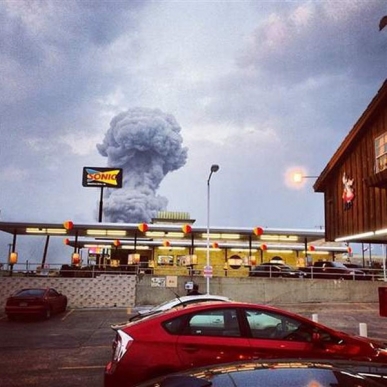Explosion At Texas Plant Renews Concerns About State Environmental Agency
Unfortunately, Wednesday night’s explosion at West Fertilizer, a plant just north of Waco, Texas is just one more tragedy in a long list of facility disasters in the state of Texas. (See previous posts on our Texas Clean Air Matters blog here and here).
The same questions always arise – how could this accident have been prevented? Who is responsible? What are the long term health implications to those who have survived this catastrophe?
The Texas Commission of Environmental Quality (TCEQ) is the lead state agency in charge of permitting facilities such as the West plant. We know that the agency investigated the facility in 2006, only after a concerned citizen called to report a strong smell of ammonia. One of the troubling items regarding this complaint is that the agency knew that the smell was ammonia and that it was coming from a fertilizer facility (a deadly omen) and still took 11 days to investigate the complaint. Once the agency did get to the facility, they recognized that the plant was storing large quantities of anhydrous ammonia without a permit.
It turns out that the facility, originally built in 1962, had been grandfathered into the permitting program – the facility was not required to have a permit until September 1, 2004, the date marking the end of the grandfathered permitting period. This means that two years went by where the facility was operating in violation of a permit and completely unnoticed by the state environmental agency.
Another troubling bit of information is that the agency gave the facility an “unclassifiable” rating for their compliance history. Compliance history, as described by the agency, entails both positive and negative factors related to the facility’s environmental performance at a site over the past five years—for example, whether at this site this customer has:
- received an enforcement order, court order, or criminal conviction; related to environmental violations in another state;
- received a citation for a chronic excessive emissions event;
- received a notice of violation from the TCEQ;
- received one or more inspections from the TCEQ (and, if so, the results of those inspections)
Given that the facility had been operating without a permit for two years, one might expect that the facility would have been given an unsatisfactory rating for compliance. An unsatisfactory rating would have triggered additional scrutiny or strengthened permit requirements for the facility. But of course we know that’s not what happened.
While no one questions that accidents happen, even at facilities that do abide by the law, it does seem that Texas gets more than its fair share of tragedies. In fact, Texas leads the nation in total fatal occupational injuries, with over 400 deaths in 2011. And when these tragedies happen at industrial facilities that handle large quantities of toxic and explosive materials, people die. Lives are forever changed.
The deaths in West, as well as all deaths from these kinds of tragedies, are senseless and preventable. In the name of all citizens in the state of Texas whose lives have ended in this tragic way, we implore the TCEQ to:
- be more diligent with regard to monitoring of facilities – how many more facilities like West exist across the state?
- hire more investigators since it is obvious that the current rate of facility inspections is woefully inadequate.
- spend more time protecting the public than fighting against EPA and public health protections, using the saved funds instead for hiring more investigators.
Disclaimer: The video, filmed by a local citizen with his daughter, shows the plant as it explodes into a larger fire. Not intended for sensitive audiences.
This post originally appeared on our Texas Clean Air Matters blog.













New York City is America's #1 Most Dirtiest City (TRAVEL+LEISURE), where EDF is based.
While criticizing other Americans, New Yorkers and their media appear to care very little about stopping the horrendous littering/dumping within their "world-class" city, and highly anti-Green behaviors of New York State and City governments.
private
April 20, 2013 at 3:23 pm